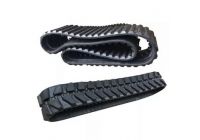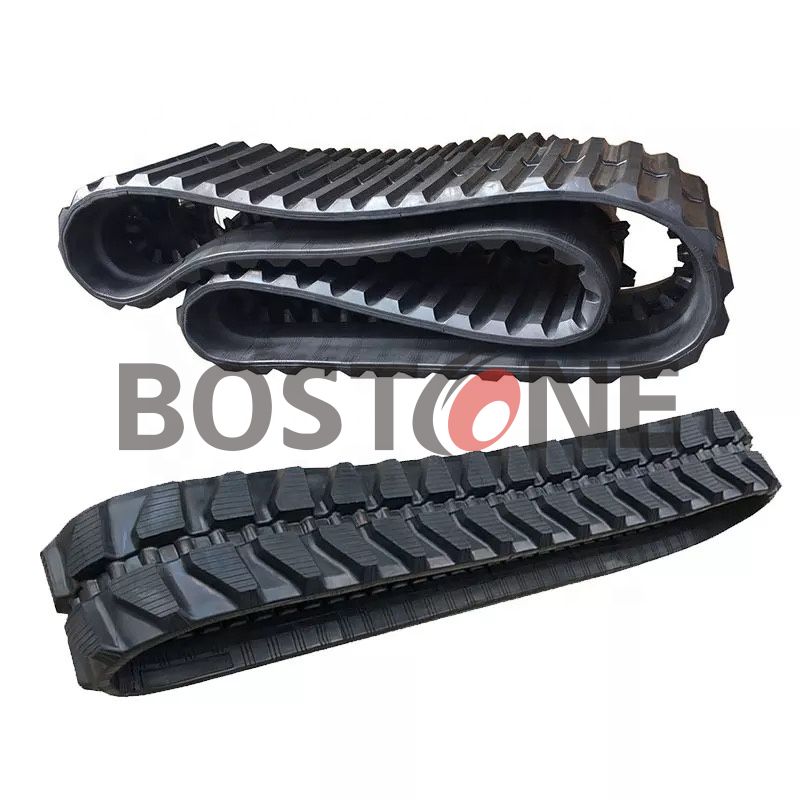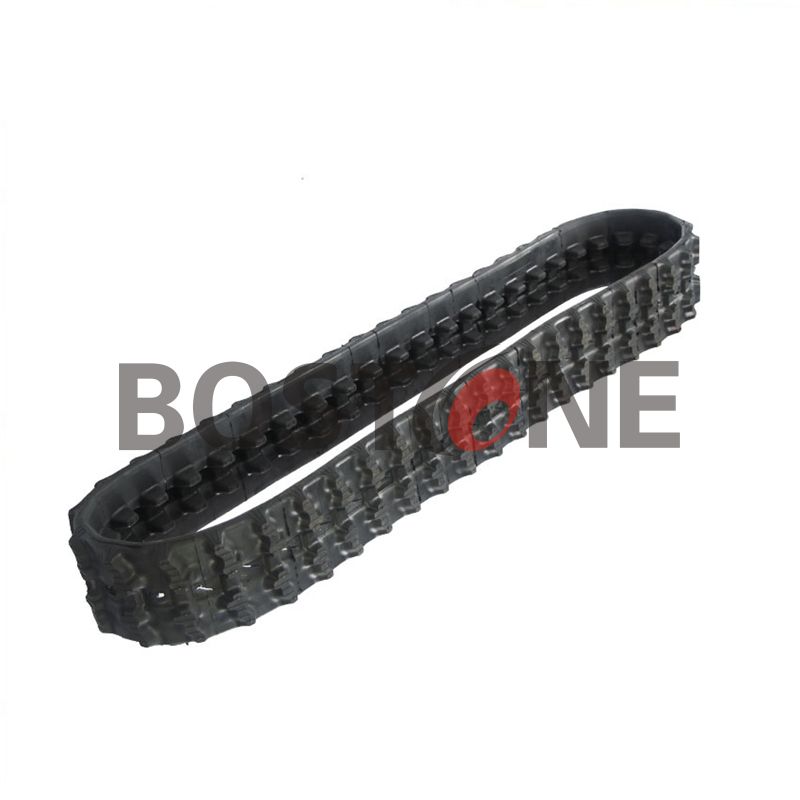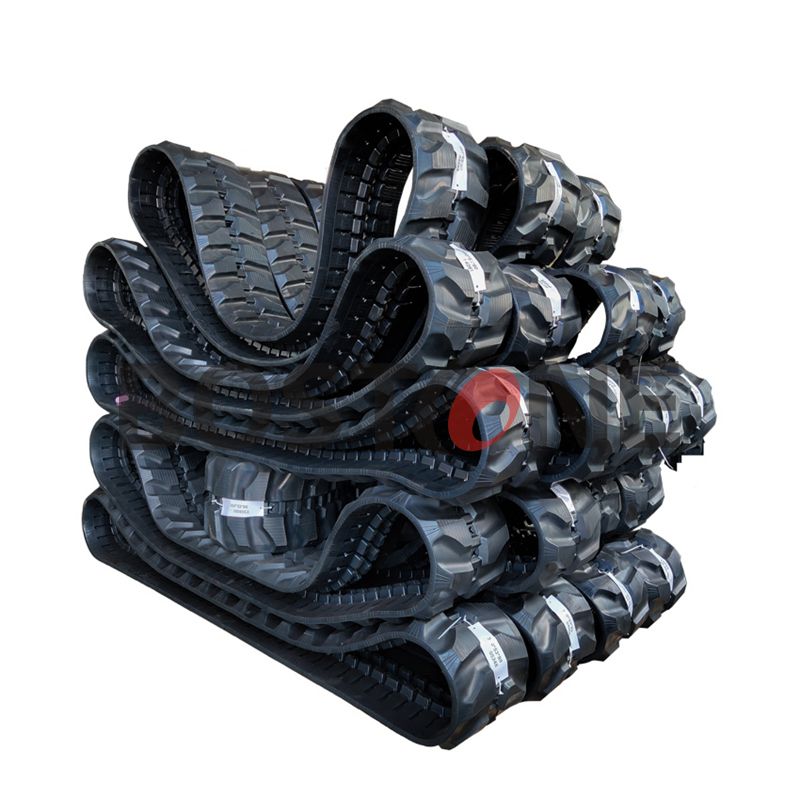Sprayer tyres, Rice transplanter tires and wheels, Agricultural tyres, tractor tires, Industrial Tyres, OTR Tires, skid tires, truck tires

In industries where heavy machinery and equipment are essential to day-to-day operations—such as construction, agriculture, and mining—ensuring the longevity of this equipment is critical for maintaining productivity and keeping operational costs low. One often overlooked component that plays a significant role in both the performance and lifespan of this machinery is the rubber track. High-quality rubber tracks can dramatically enhance the durability, safety, and efficiency of equipment, making them an invaluable investment.
At Bostone, we understand the importance of reliable, durable rubber tracks for a wide variety of industrial and heavy-duty applications. In this article, we’ll discuss the key benefits of high-quality rubber tracks, how they extend the life of your equipment, and what to look for when selecting the best tracks for your needs.
Rubber tracks are continuous belts made from high-grade rubber and embedded with steel or fabric reinforcement for added strength. They are primarily used on equipment like excavators, skid steers, agricultural machinery, and compact track loaders. Rubber tracks provide better traction, distribute the machine’s weight evenly across a larger surface area, and offer a smoother ride compared to traditional metal tracks or tires.
Their flexibility, durability, and reduced ground impact make them an excellent choice for operators who work on sensitive terrains or require enhanced mobility and stability.

The longevity of heavy machinery is directly tied to the condition of its tracks. Using low-quality or worn-out rubber tracks can cause premature wear on other components of your equipment, increase maintenance costs, and lead to unnecessary downtime. Here are the ways high-quality rubber tracks from Bostone can extend the life of your equipment:
One of the most significant advantages of using high-quality rubber tracks is that they reduce wear and tear on the undercarriage components of your equipment. The undercarriage, which includes rollers, idlers, sprockets, and other key components, often bears the brunt of operational stress in heavy machinery. Inferior rubber tracks or those that are poorly maintained can cause excessive vibrations, leading to premature damage to these parts.
High-quality rubber tracks are designed to distribute pressure evenly across the undercarriage, reducing the strain on individual components. The flexibility and enhanced traction of these tracks minimize vibrations, reducing wear and tear and extending the lifespan of both the tracks and the undercarriage system.
Rubber tracks provide better traction compared to traditional steel tracks, especially on soft or uneven surfaces. This is particularly important for equipment that operates on loose soil, mud, sand, or snow, where slipping or sliding could cause safety hazards or equipment damage.
High-quality rubber tracks are engineered with advanced tread patterns that offer superior grip and stability, allowing the machine to move smoothly across a variety of terrains. This not only enhances the efficiency of the equipment but also reduces the likelihood of accidents or damage caused by unstable movements, ultimately helping to preserve the condition of your equipment.
Heavy machinery equipped with rubber tracks exerts less ground pressure than equipment with steel tracks or tires. This is because rubber tracks distribute the machine's weight more evenly across a larger surface area, reducing soil compaction and minimizing damage to sensitive terrain. This feature is especially important in agriculture and landscaping, where maintaining the integrity of the ground is essential.
In addition to preserving the terrain, lower ground pressure reduces the stress on the machine's hydraulic and mechanical systems. This, in turn, reduces wear on essential components, extending the overall life of the equipment.
One of the primary concerns with rubber tracks is their potential to wear out over time due to rough conditions, sharp objects, or abrasive surfaces. However, high-quality rubber tracks are built to withstand these challenges. Bostone rubber tracks are made with advanced rubber compounds and embedded steel cords that provide enhanced durability and puncture resistance.
With these features, operators can work confidently, knowing that the tracks will stand up to tough environments without frequent replacements. The durability of premium rubber tracks minimizes downtime and the need for constant track repairs, which can add unnecessary expenses and delay projects.
Rubber tracks offer smoother operation compared to metal tracks, reducing vibrations during use. Excessive vibrations can cause internal components of the machine, such as the engine and hydraulic systems, to wear out more quickly. Vibrations also lead to operator fatigue, which can reduce productivity and increase the likelihood of mistakes during operation.
By minimizing vibrations, high-quality rubber tracks help to protect both the machine and the operator, contributing to a more efficient and safer working environment. The reduced stress on internal components ensures that your equipment stays in optimal condition for longer periods, extending its lifespan.

Selecting the right rubber tracks for your equipment is crucial in maximizing their benefits and ensuring long-lasting performance. Here are some key factors to consider when choosing rubber tracks:
Look for rubber tracks that are made from high-quality rubber compounds reinforced with steel cords or synthetic fibers. This ensures that the tracks can withstand harsh environments, resist punctures, and provide long-lasting performance.
At Bostone, our rubber tracks are manufactured using premium-grade materials that enhance durability and resilience, making them ideal for even the most challenging job sites.
The tread design of rubber tracks can vary depending on the type of terrain your equipment operates on. For instance, deep lug patterns provide better traction in muddy or loose soil conditions, while shallower treads are ideal for hard surfaces. Ensure that the tread design of your rubber tracks matches the specific application for which you are using your equipment.
Proper track size and fit are critical for optimal performance. Using tracks that are too tight or too loose can cause increased wear on the undercarriage components and lead to premature track failure. Always ensure that the rubber tracks you choose are compatible with your equipment’s specifications. Bostone provides a wide range of rubber tracks in various sizes to fit different types of machinery, ensuring a perfect fit for your equipment.
It’s important to choose rubber tracks from a reputable manufacturer with a proven track record of producing high-quality products. Bostone is a trusted name in the industry, known for our commitment to quality, innovation, and customer satisfaction. Our rubber tracks are designed to meet the highest industry standards, ensuring reliable performance and longevity.

Investing in high-quality rubber tracks is one of the most effective ways to extend the life of your equipment, improve safety, and reduce maintenance costs. By providing better traction, stability, durability, and reduced wear on undercarriage components, premium rubber tracks help you get the most out of your machinery, even in tough conditions.
At Bostone , we are committed to offering high-quality rubber tracks designed to meet the demands of various industries. Whether you're operating in construction, agriculture, or heavy industry, our tracks are built to ensure the smooth and efficient performance of your equipment for years to come.
By Bostone